Enjoy
San Roque
we want you
Historic Centre
The Old Quarter has been a Conservation Area (a collection of listed historical buildings) since 1975. The most important monuments are Saint Mary the Crowned Parish Church (1735), the Governor’s Palace (18th century) and the Bullring (1853), the second oldest in the province of Cadiz and one of the oldest in Andalusia. The most picturesque streets are San Felipe, featuring ancestral homes with typical patios, San Nicolás and Historiador Montero. The most emblematic square is the Plaza de Armas where modern bullfighting (the Red Cape & Sword Technique) was invented in 1720. The city offers five permanent exhibitions at present: the Municipal Museum with the Carteia archaeological and Luis Ortega Brú sculpture and iconography collections; the Bullfighting Museum, based on local bullfighting history; San Roque-born actor Juan Luis Galiardo’s permanent exhibition and lastly, the CB Radio Museum, the only one of its kind in Europe.
The most notable festivity is Holy Week, declared an Event of National Andalusia Tourist Interest. The Good Friday Magna Procession is the most relevant one as it features fourteen different floats and is the only one held annually in Andalusia. The other big festive date is the Royal Fair in August which ends with the “Toro del Aguardiente” Bullrun, a tradition dating back to 1649.
San Roque is the Gibraltar Area’s historical centre, a city tour is a must when coming to the area for the first time.

SAINT MARY THE CROWED PARISH CHURCH
Saint Mary the Crowned Parish Church features 18th century Neoclassical architecture and Baroque artwork. Once the town began to develop, the construction of this church started in 1735 over the foundations of the old San Roque shrine, dating back to 1508. In the interior the main highlight is the main altar, where the statues of Saint Mary the Crowned, Saint Sebastián, Saint Roc and Saint Joseph, brought from Gibraltar and dating back to the 14th century. Among the statues from Gibraltar the Holy Burial and the Christ of Humility and Patience stand out, each in its own side chapel and from the 15th until 17th century. We can also encounter the statue of Christ of a Happy Death by the San Roque-born sculptor, Luis Ortega Brú.
The Baroque style Sanctum Side Chapel and the tomb of poet and military officer, José Cadalso, who died in the Great Siege in 1782 are worth mentioning.
The church records contain the Parish of Gibraltar church records from 1556 until 1704. As far as the exterior is concerned, the main door and bell tower stand out. The temple was declared a listed historical building on 30th May 1974.
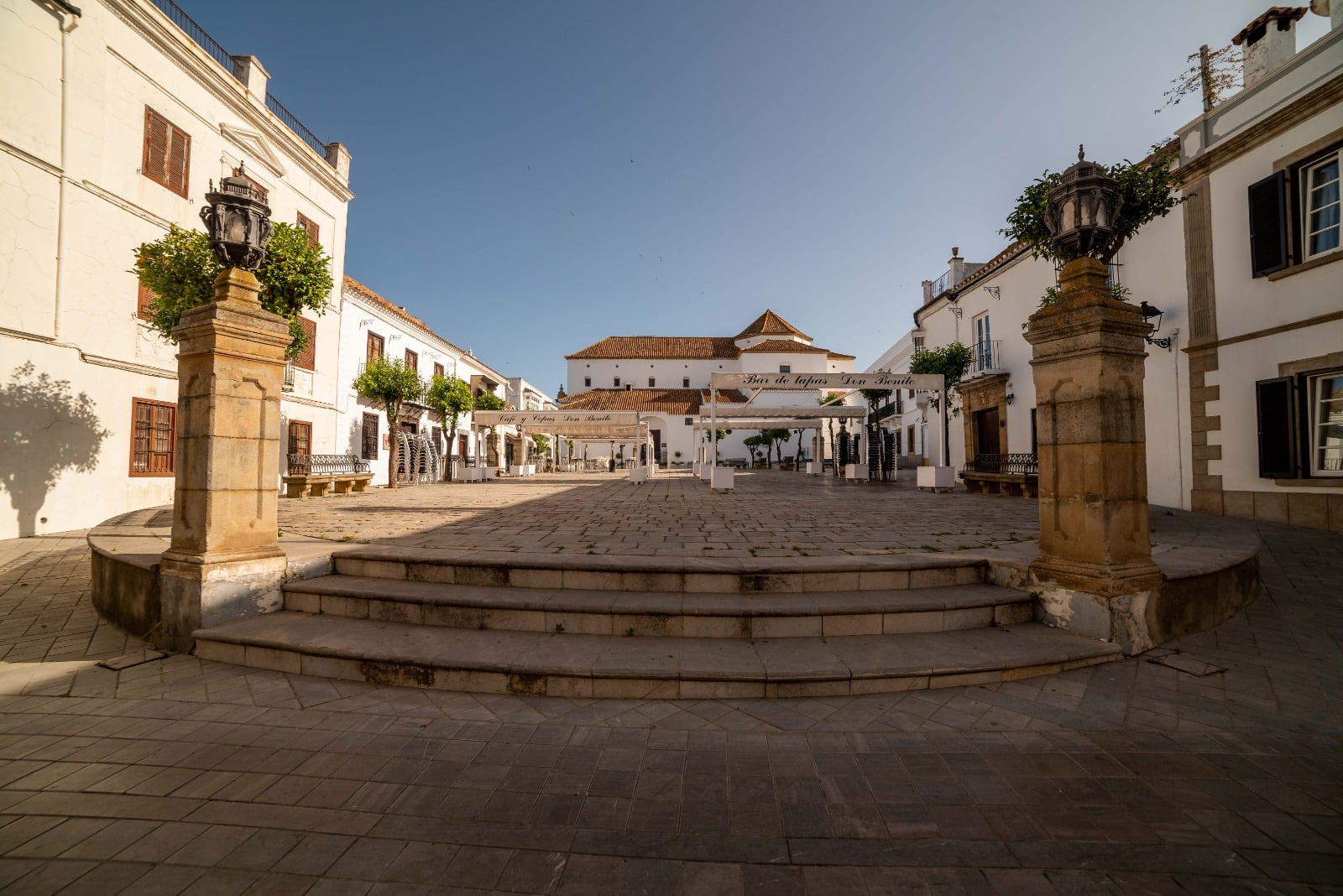
PLAZA DE ARMAS SQUARE
The Plaza de Armas Square initially was the Main Square, it featured a sandy surface and was where bullfighting events were held. It is said that Manuel Ballón “El Africano” invented the Red Cape & Sword Technique here in 1720. The square’s current flagstones was laid down in 1846.
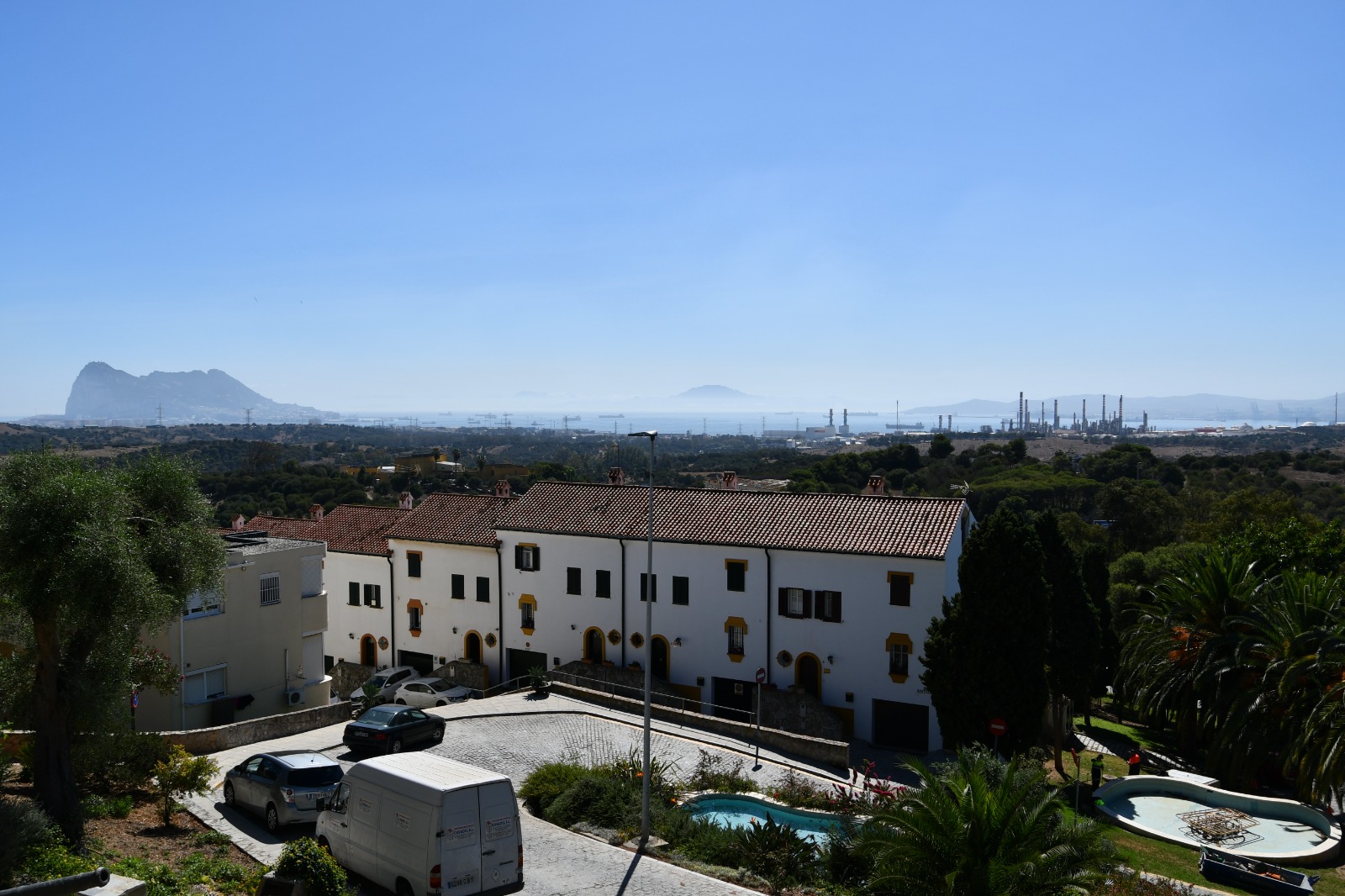
POET DOMINGO DE MENA VIEWPOINT
Poet Domingo de Mena Viewpoint is popularly called “The Canons”. It offers magnificent views of the Rock, the whole of the Bay of Gibraltar and North Africa. There are two 18th century canons located here which were used during one of the sieges on Gibraltar. During the sieges, this was the rearguard and the necessary signals were sent to the forces fighting on the isthmus.
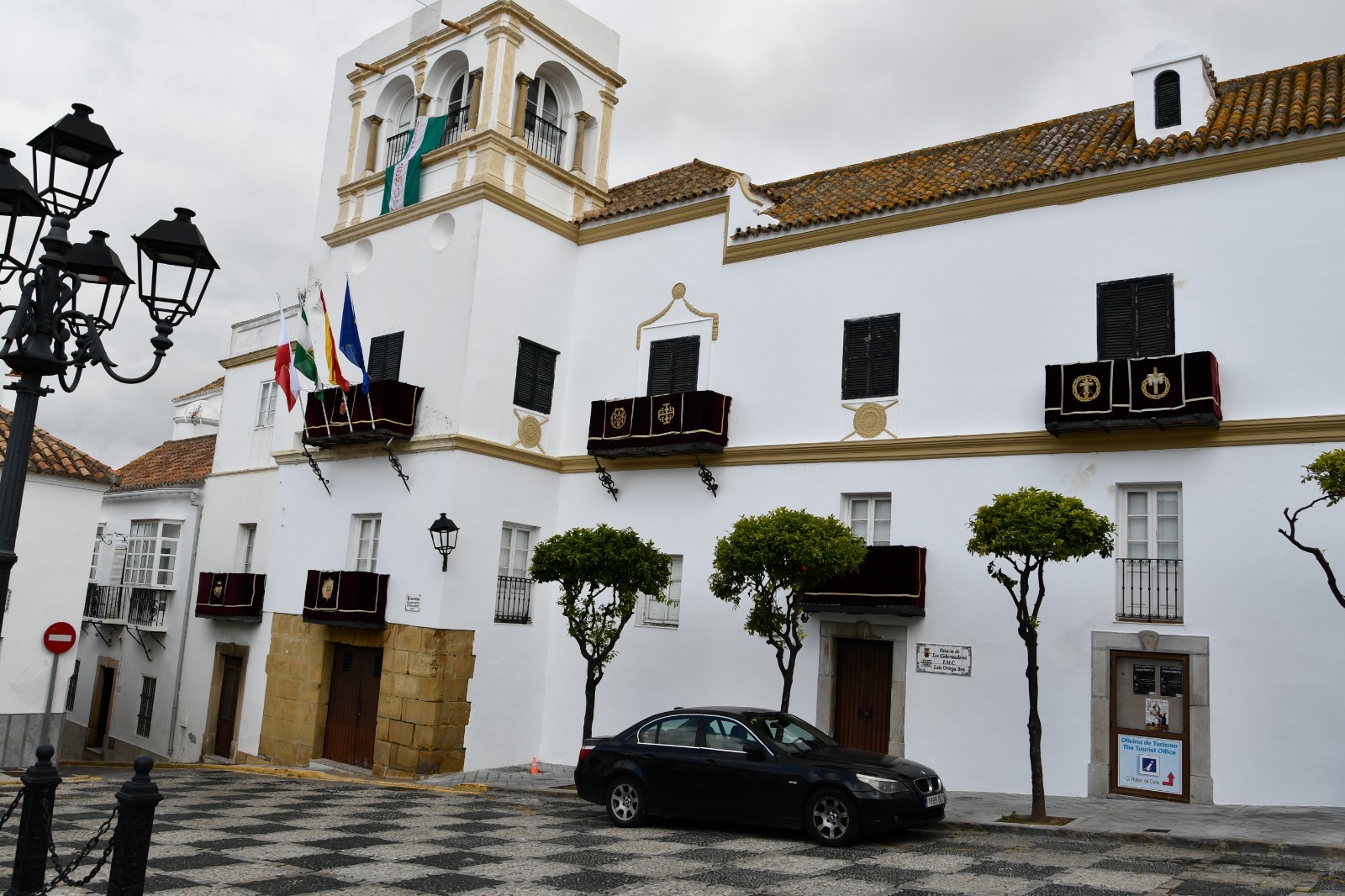
THE GOVERNOR’S PALACE
El Palacio de los Gobernadores es de arquitectura civil neoclásica y data del siglo XVIII, fue sede de la Comandancia Militar de la zona de Gibraltar hasta el siglo XIX y se dice que muchos de los ataques durante los asedios a la Roca se planearon aquí.
The Governor’s Palace features Neoclassical architecture and dates back to the 18th century. It was the Gibraltar Area’s military command headquarters until the 19th century and it is said that many attacks during the sieges on the Rock were planned here. Nowadays it is the “Luis Ortega Brú” Council Culture Department’s Headquarters. Located in the Church Square, previously known as Vegetable Square, due to the fact the market was held here. The building was declared a listed historical monument on 2nd March 1972.
At present it houses the Municipal Museum’s Luis Ortega Brú collection, two painting halls dedicated to two notable painters, Daniel Castilla Zurita and José Cruz Herrera and the Municipal Art Gallery with temporary exhibitions, as well as the Exodus, a relief representing the Spanish Gibraltarians leaving the Rock in 1704 by San Roque-born sculptor, Luis Ortega Brú.
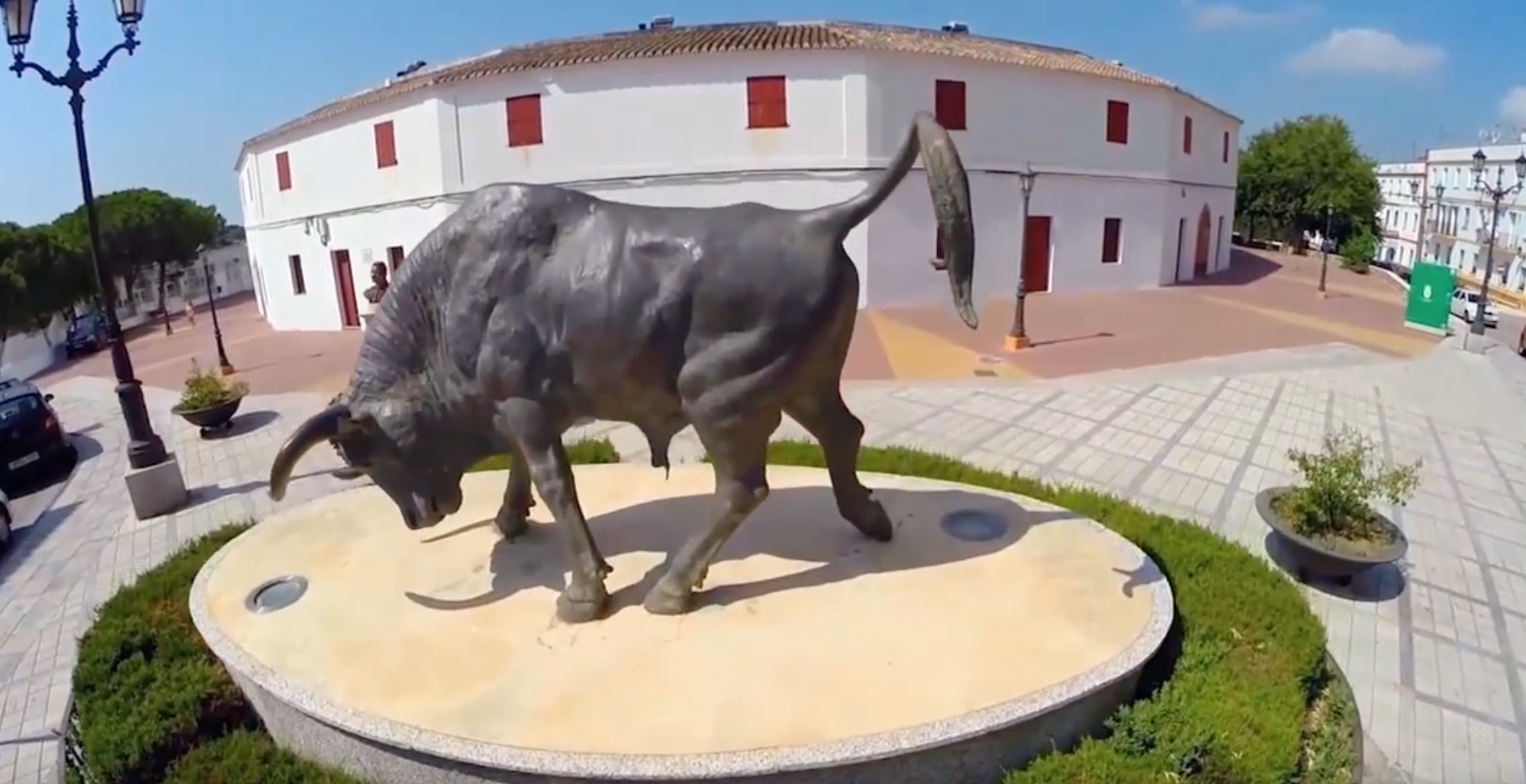
THE BULLRING
The Bullring, inaugurated in 1853, is one of the oldest ones in Andalusia and the second oldest in the province of Cadiz. Its design is based on the bullring in Ronda, although it has unique architectural features. In fact, it is said that the master builder entrusted his measurements to a local maths teacher and this was the reason the bullring has no “callejón” (an alleyway behind which the matador takes refuge), as there was not enough room to build it, due to a mistake in his calculations. Two bullfights were staged for the Bullring’s inauguration with matadors Cayetano Sanz and Francisco Vilches “Llilly.” The first one took place on 20th August 1853.
During the fair in 1885 the bullfighter assistant Mariano El Tornero was killed and in 1946, the Mexican apprentice bullfighter, Eduardo Liceaga was fatally gored. The bullring became council property in December 1993. The capacity is 3,500 people.
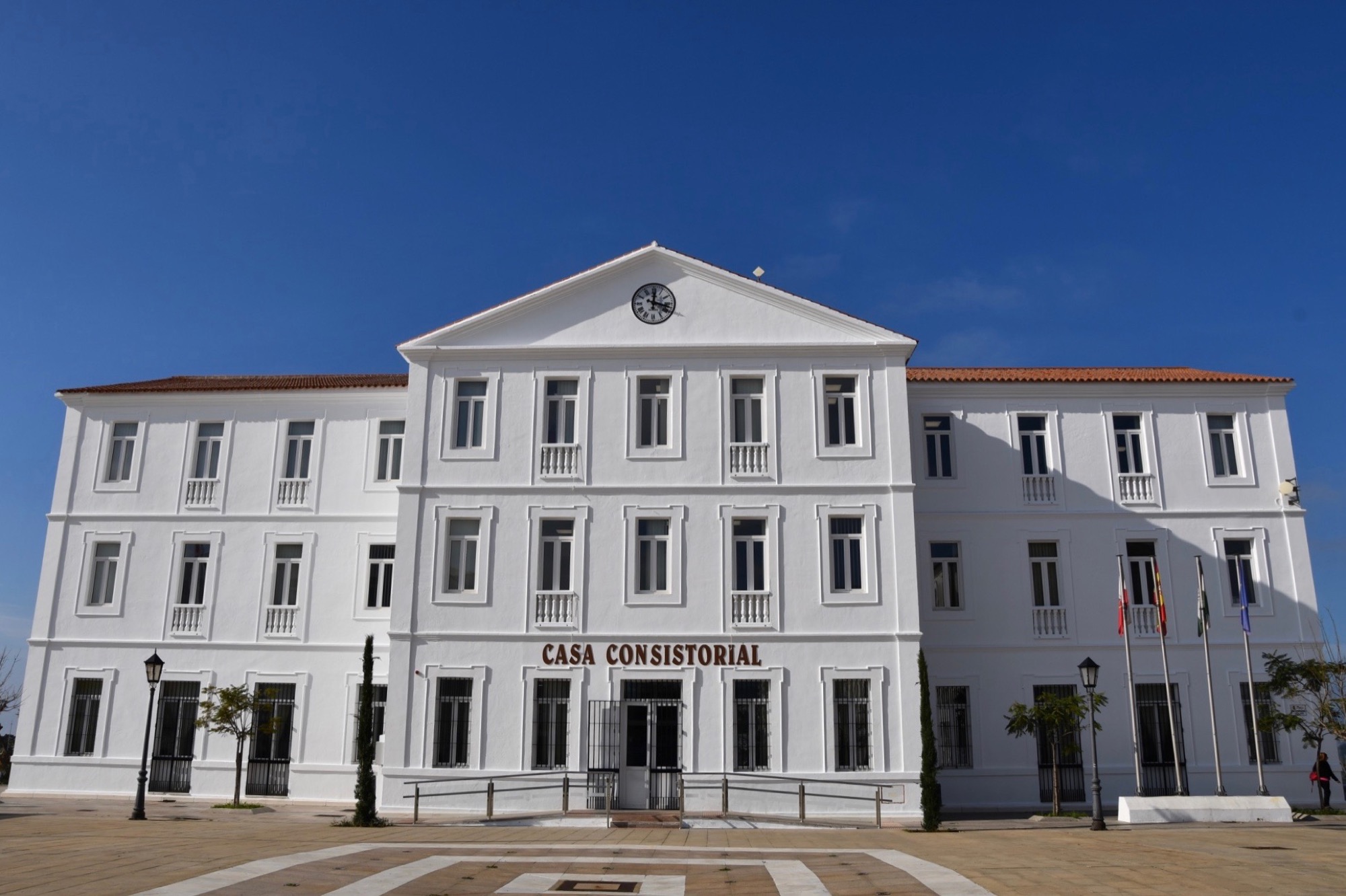
DIEGO SALINES ARMY BARRACKS (NEW CITY HALL)
The old Diego Salinas Army Barracks date back to the 18th century and feature Neoclassical style architecture. It was used to deploy troops to conflicts in North Africa and was one of the largest of its era. The PAVIA 19 Regiment was the last one to occupy its facilities when the barracks closed in 1995. Diego Salinas was the military governor who was defending Gibraltar when it was occupied by the British.
Currently the old army barracks buildings are being used for the new City Hall, the Central Library, the Official Language School, the Local Development & Employment Agency (Job Centre), CADE (Business Support & Development Centre) and the Local Police HQ.
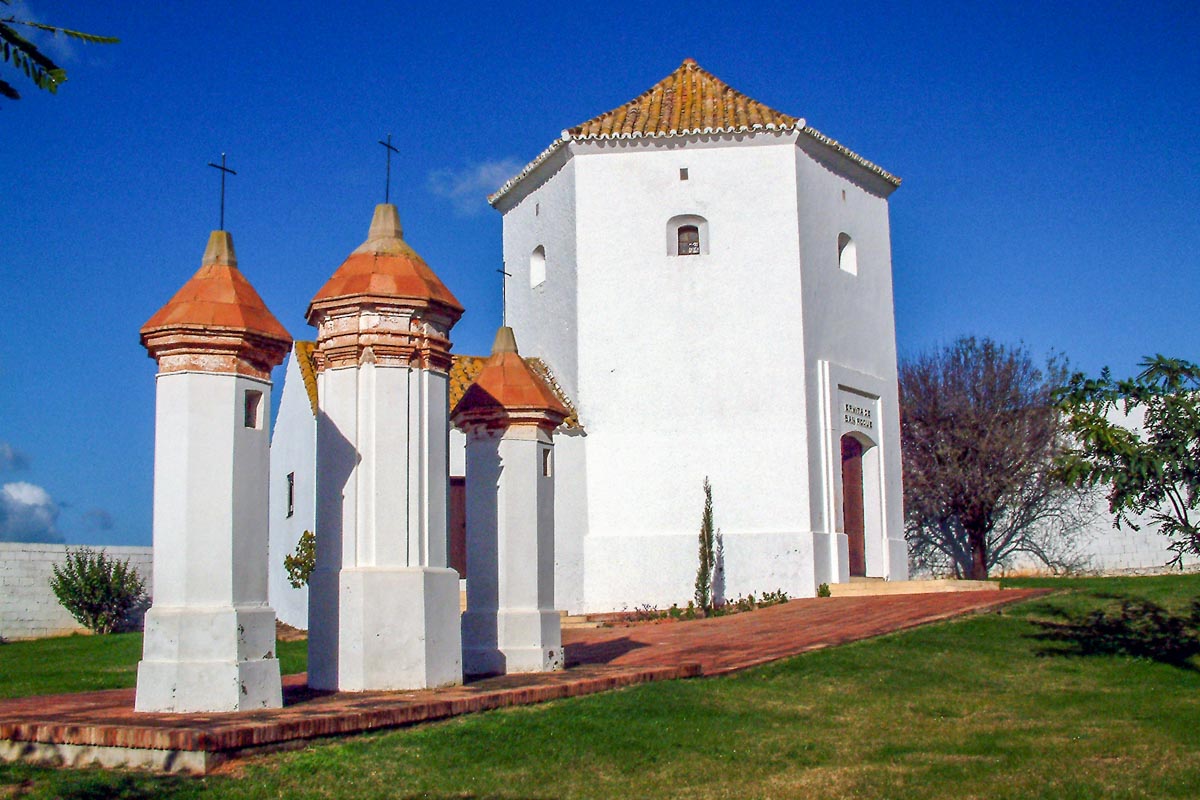
NEW SAN ROQUE SHRINE
The new San Roque Shrine was built in 1801 and features Neoclassical architecture. Inside the statue of Saint Roc stands out. In the fourth week of April the San Roque Pilgrimage is held, in which the statue is taken out in a parade. The itinerary starts at the temple towards Pinar del Rey and back.
During the Peninsula War Napoleonic troops sacked the Shrine and destroyed the statue of the saint. This statue was replaced in 1833 by another donated by San Roque-born captain Juan Rojas, who was stationed in Seville, and having suffered from the cholera epidemic, made a vow to have a statue made if he and his family recovered from the disease. This is what happened and a new statue of Saint Roc was placed in this popular chapel.

OUR LADY OF VISITATION CHAPEL
Our Lady of Visitation Chapel dates back to the 18th century and feature Neoclassical style architecture. The temple houses the Nazarene statue retrieved from Gibraltar. Among other statues that stand out are Our Lady of Anguish and Our Lady of Sorrows which are taken out in procession during Easter. The building next door is the Charity Hospital, founded in 1776 by the order of the same name which replaced the one that existed in Gibraltar. The nuns were in charge of looking after sick, poor people and caring for orphans from all over the area.
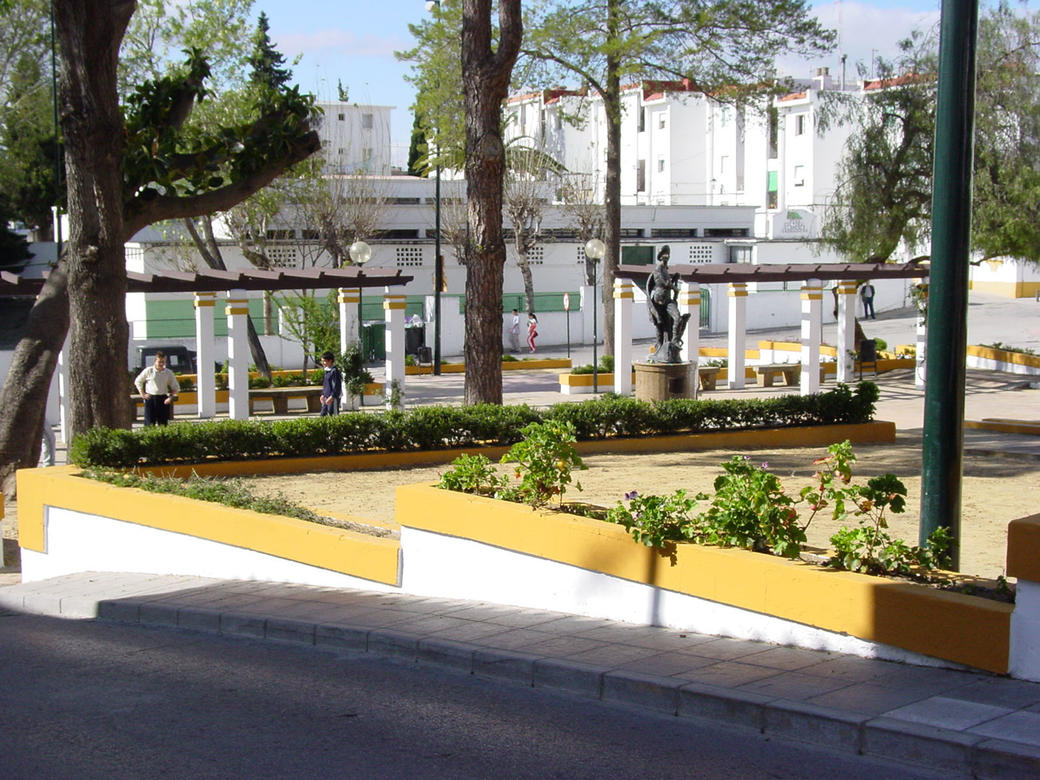
SIMÓN SUSARTE STATUE
At Simón Susarte Park the fountain with the statue of the distinguished goat shepherd, Simón Rodríguez Susarte who led Spanish forces commanded by colonel Figueroa along a mountain pass to the top of the Rock of Gibraltar, not long after it had been captured in 1704.
This is was the best chance to take the fortress, but those brave men were left to their fate by the Spanish military camp, who did not intervene, despite the attack having been planned.
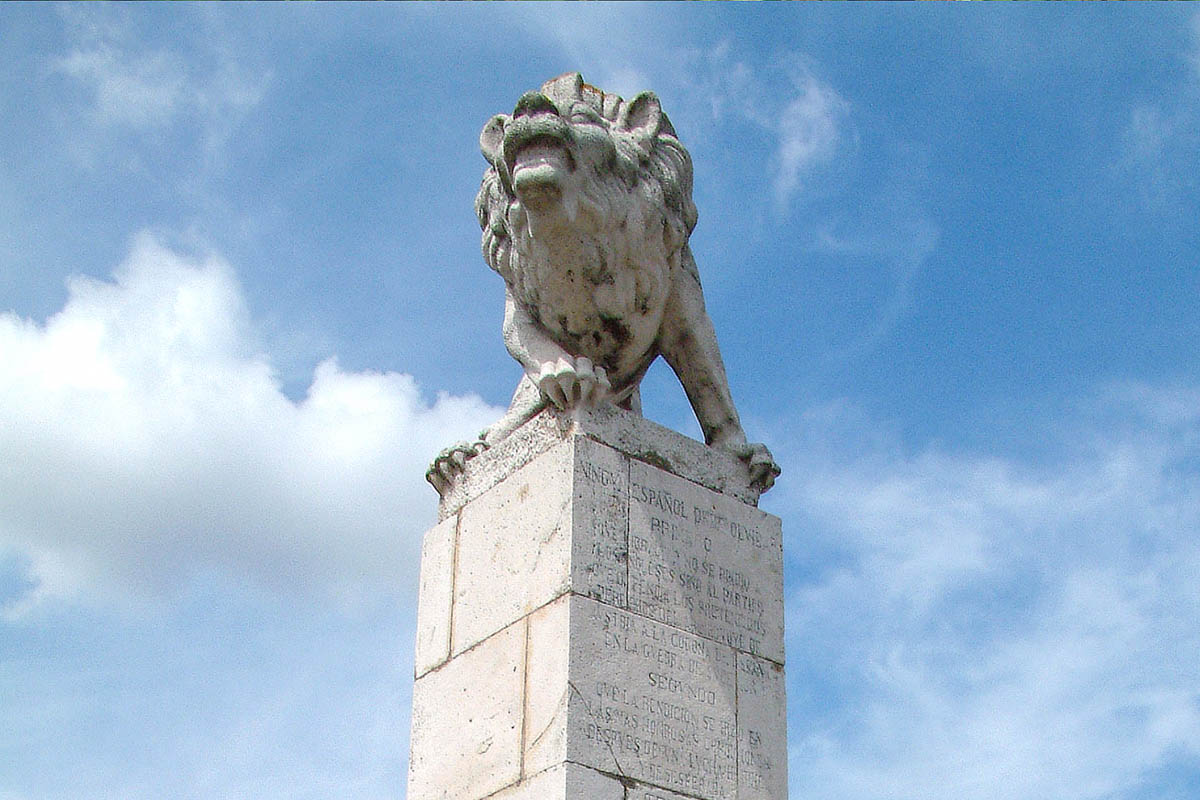
THE LION STATUE
Symbolising the bravery, courage and strength of the fallen during the sieges on Gibraltar. It looks towards Gibraltar commemorating and indicating that Gibraltar lives on in San Roque.
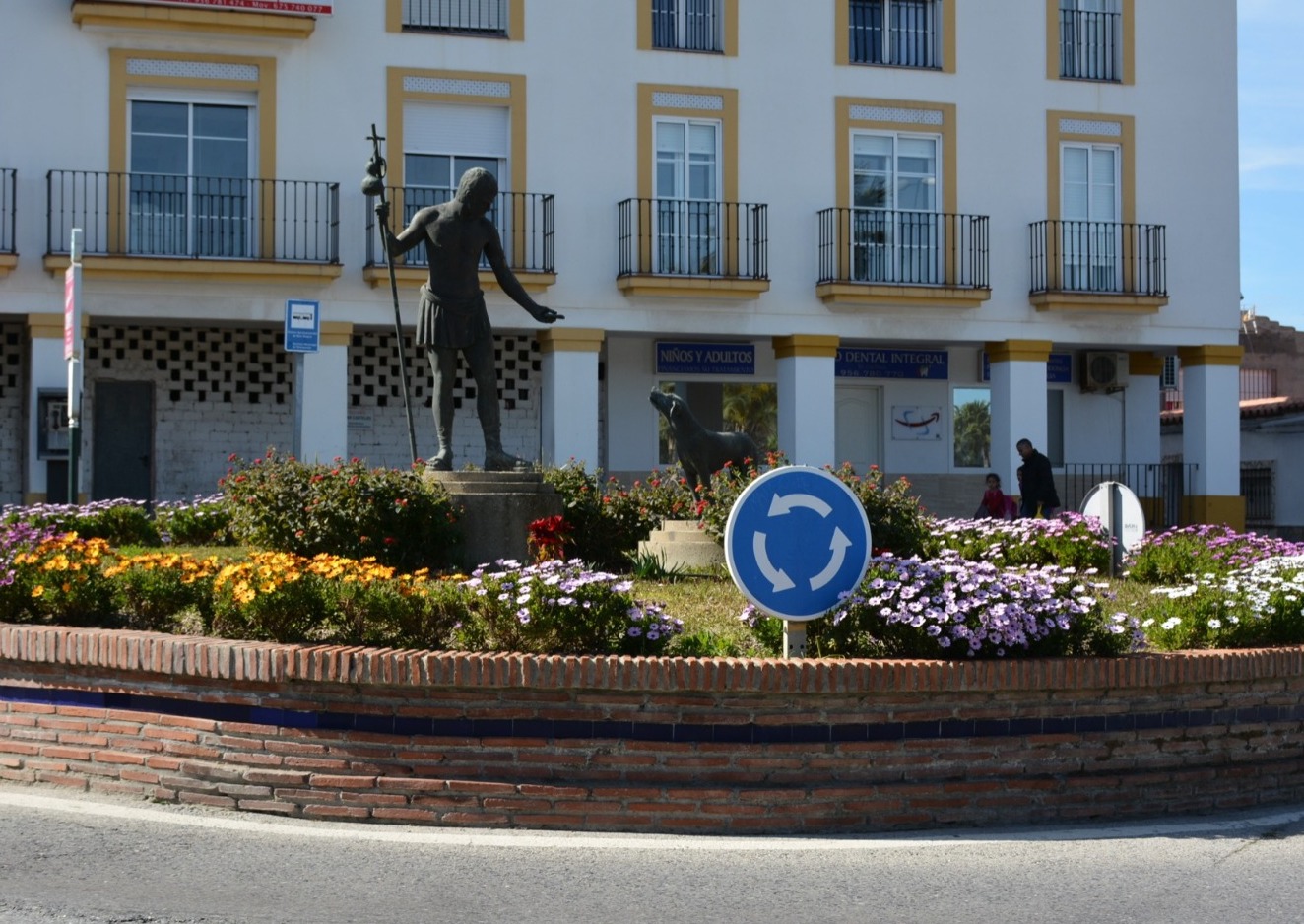
SAINT ROC & DOG STATUE
The dog from San Roque is called “Melampo” and according to the well-known Spanish saying, it was Ramón Ramírez who cut off its tail. There are several legends about how the dog lost its tail. The most well-known one in 1885 coincided with one of the plague epidemics that devastated these lands. People would flock to the Saint Roque Shrine to pray and buy magic dust the sanctuary caretaker sold. This “magic” potion was made out of shavings from the tails of dog statue. Business was so good it left the dog tailless.

ALAMEDA ALFONSO XI SQUARE
The Alameda Alfonso XI Square dates back to 1831. The name Alfonso XI was added in the 1960s as a tribute to the Castilian King who was victim of the plague while laying siege on the Rock to reconquer it from the Moors in 1350.
The Alameda is the city’s meeting point and place for social activity. It is also where the Juan Luis Galiardo Theatre is located, inaugurated in 1995 and name after the famous San Roque-born actor. The theatre has a capacity for 670 people.
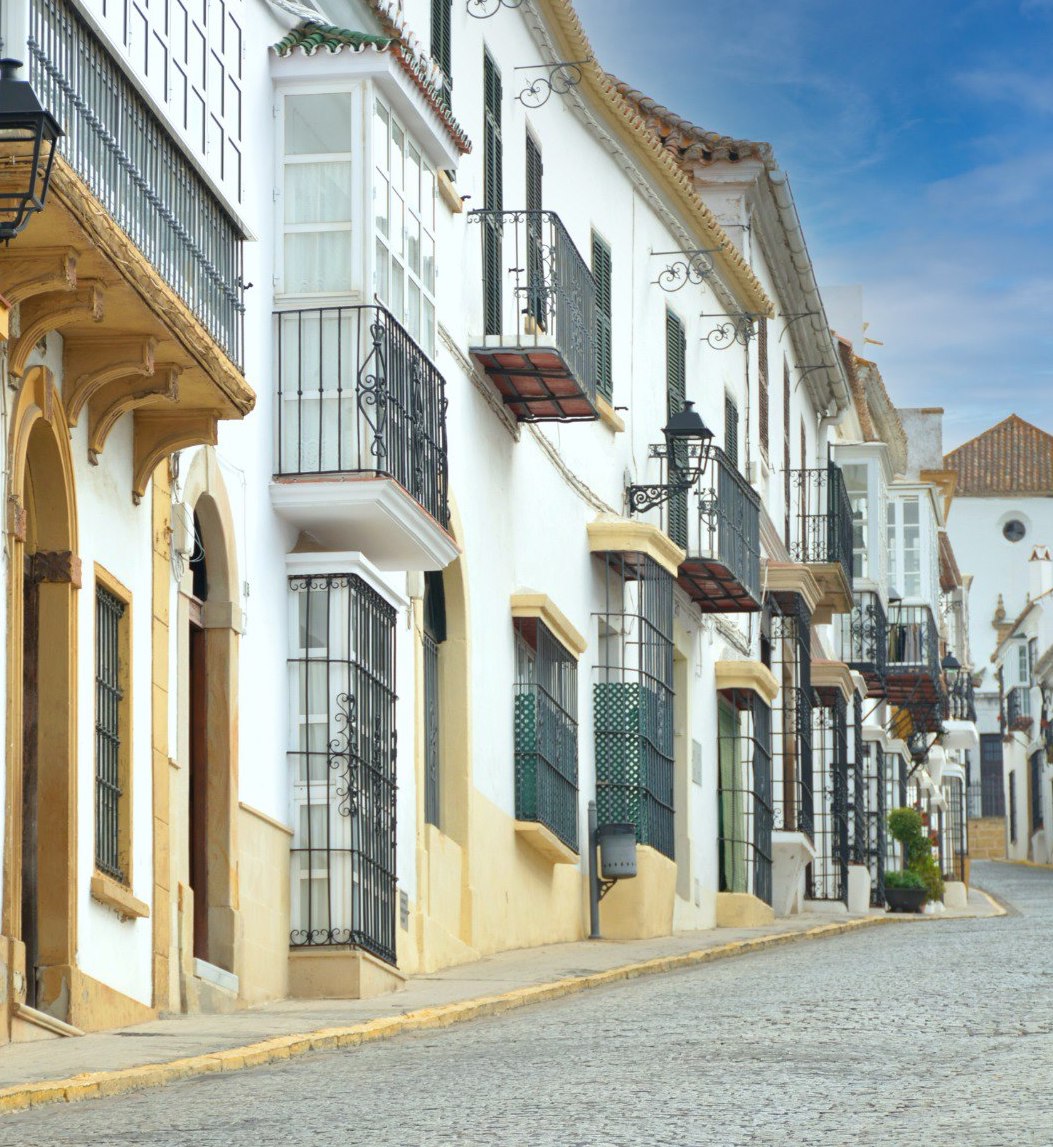
SAN FELIPE STREET
The main artery in the city of San Roque. It stands out due to its impressive, tidy façades with balconies and wrought iron bars on windows, as well as its typical Andalusian patios. At number ten award-winning actor Juan Luis Galiardo was born.
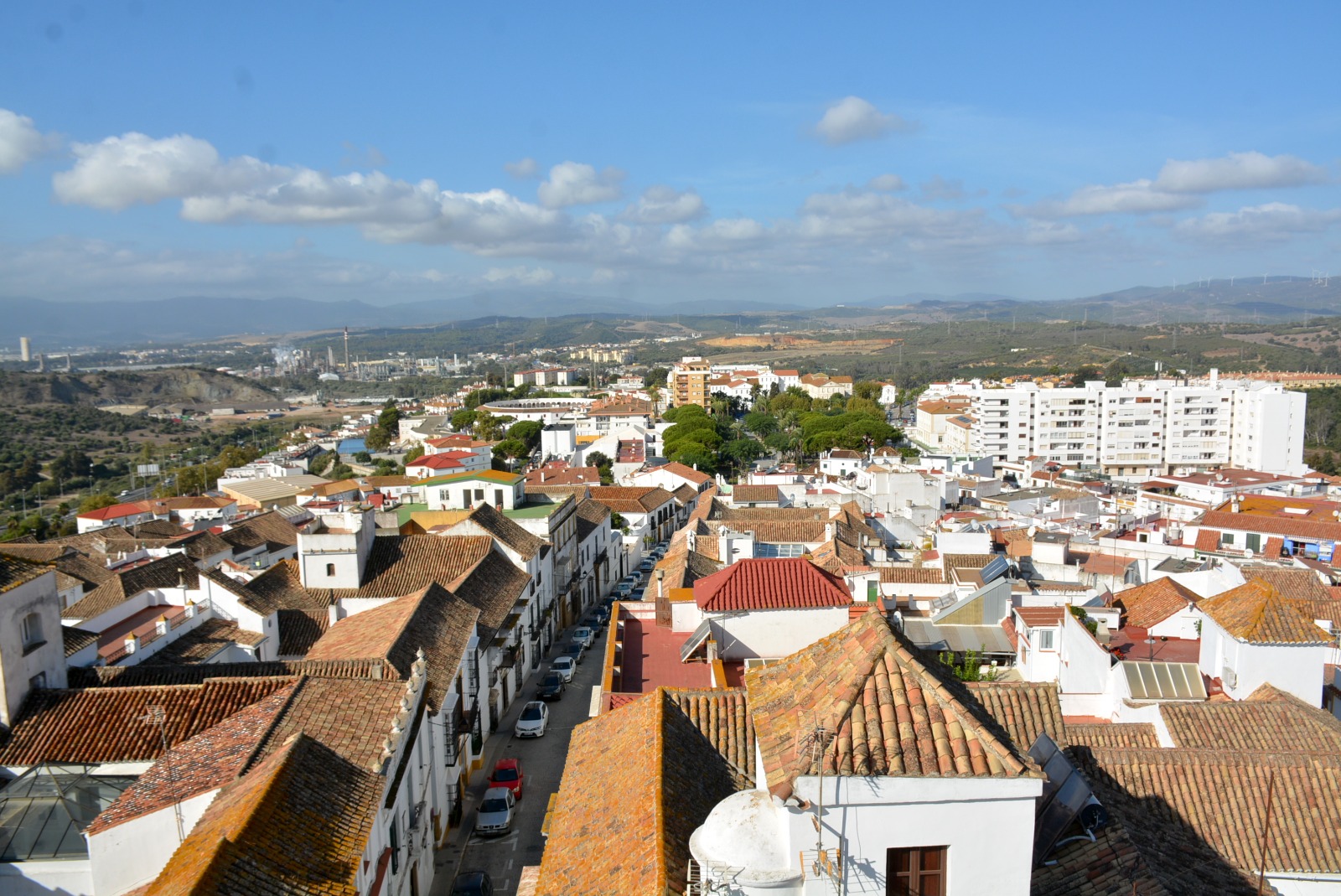
SAN NICOLÁS & HISTORIADOR MONTERO STREETS
They are among the most picturesque streets in the Old Quarter. San Nicolás Street is very traditional in appearance. This is where the Mercedarios Convent was located, which was closed when the state confiscated churches in 1835. The same building was renovated in 1843 and is where a military chapel was located.

MARÍA ESPAÑA DRINKING FOUNTAIN
Built in the 18th century. It is linked to water sellers in the olden days, who packed donkeys with pitchers full of fresh water to supply local inhabitants. It was resting place for walkers and a recreational area for local people.
